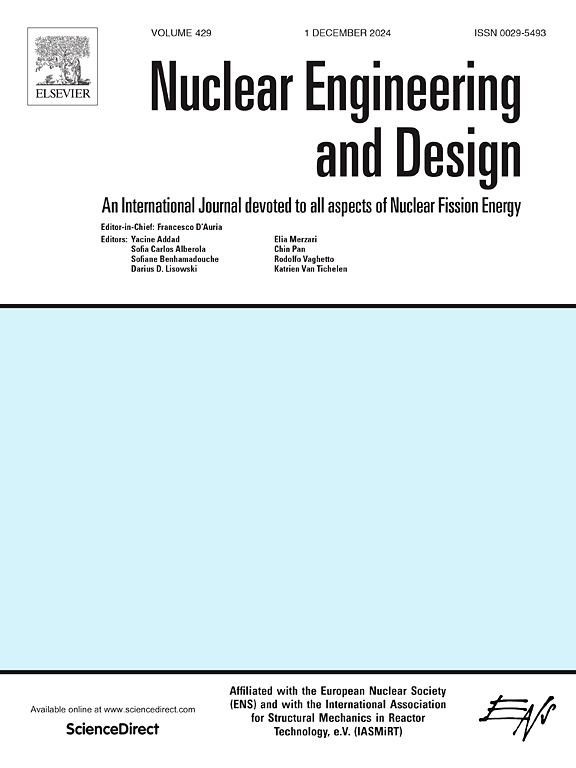Feasibility of small modular reactors for decarbonizing district heating systems: a case study of the Helsinki metropolitan area
IF 2.1
3区 工程技术
Q1 NUCLEAR SCIENCE & TECHNOLOGY
引用次数: 0
Abstract
This study explores the feasibility of integrating small modular reactors (SMRs) into the district heating (DH) and cooling system of the Helsinki metropolitan area, Finland. The objectives of the study are to evaluate the economic and operational aspects of two SMR technologies, the academic concept E-SMR (155 MWelectric/50 MWDH) and the VTT-developed LDR-50 (50 MWDH), as well as their environmental impact on the DH and cooling system using the Backbone modeling framework. Despite investments in biomass-fired DH generation and large heat pumps, Helsinki remains heavily dependent on fossil fuels. SMRs could potentially offer a reliable and continuous supply of carbon-free energy.
Results indicate that while both SMR designs reduce CO2 emissions and enhance electricity supply, E-SMR is not a profitable investment, whereas LDR-50 is. The fluctuating energy demand and low electricity prices in the studied area presented challenges for the larger E-SMR. Heat production capabilities are highly valued in the studied system, which was reflected in LDR-50′s profitability and the sensitivity study of E-SMR’s heat extraction rate.
Sensitivity analyses highlighted the influence of economic factors such as investment costs, discount rates, and operating expenses on the profitability of both SMRs. Additionally, energy market conditions play a crucial role in determining the financial viability of SMRs, suggesting that their profitability can vary significantly under different market scenarios. Integrating SMRs into future energy systems, such as electrolyzers, could enhance their feasibility, warranting further research. Moreover, the economic viability of different fuel strategies should be investigated to explore their potential benefits for SMRs.
用于区域供热系统脱碳的小型模块化反应堆的可行性:赫尔辛基大都市区的案例研究
本研究探讨了将小型模块化反应堆(SMRs)集成到芬兰赫尔辛基大都市区区域供热(DH)和制冷系统中的可行性。该研究的目的是利用Backbone建模框架评估两种小型堆技术的经济和运行方面,即学术概念E-SMR(155兆瓦/50兆瓦时)和vtt开发的LDR-50(50兆瓦时),以及它们对DH和冷却系统的环境影响。尽管投资了生物质发电和大型热泵,赫尔辛基仍然严重依赖化石燃料。小型反应堆有可能提供可靠和持续的无碳能源供应。结果表明,虽然两种小堆设计都减少了二氧化碳排放并增加了电力供应,但E-SMR不是一项有利可图的投资,而LDR-50则是。研究区域的能源需求波动和低电价对大型电堆提出了挑战。研究的系统非常重视产热能力,这体现在LDR-50的盈利能力和E-SMR的抽热率敏感性研究中。敏感性分析强调了投资成本、贴现率和运营费用等经济因素对两家中小企业盈利能力的影响。此外,能源市场条件在决定小型反应堆的财务可行性方面起着至关重要的作用,这表明它们的盈利能力在不同的市场情景下会有很大差异。将smr集成到未来的能源系统中,如电解槽,可以提高其可行性,值得进一步研究。此外,还应研究不同燃料策略的经济可行性,以探索其对小型堆的潜在效益。
本文章由计算机程序翻译,如有差异,请以英文原文为准。
求助全文
约1分钟内获得全文
求助全文
来源期刊

Nuclear Engineering and Design
工程技术-核科学技术
CiteScore
3.40
自引率
11.80%
发文量
377
审稿时长
5 months
期刊介绍:
Nuclear Engineering and Design covers the wide range of disciplines involved in the engineering, design, safety and construction of nuclear fission reactors. The Editors welcome papers both on applied and innovative aspects and developments in nuclear science and technology.
Fundamentals of Reactor Design include:
• Thermal-Hydraulics and Core Physics
• Safety Analysis, Risk Assessment (PSA)
• Structural and Mechanical Engineering
• Materials Science
• Fuel Behavior and Design
• Structural Plant Design
• Engineering of Reactor Components
• Experiments
Aspects beyond fundamentals of Reactor Design covered:
• Accident Mitigation Measures
• Reactor Control Systems
• Licensing Issues
• Safeguard Engineering
• Economy of Plants
• Reprocessing / Waste Disposal
• Applications of Nuclear Energy
• Maintenance
• Decommissioning
Papers on new reactor ideas and developments (Generation IV reactors) such as inherently safe modular HTRs, High Performance LWRs/HWRs and LMFBs/GFR will be considered; Actinide Burners, Accelerator Driven Systems, Energy Amplifiers and other special designs of power and research reactors and their applications are also encouraged.
 求助内容:
求助内容: 应助结果提醒方式:
应助结果提醒方式:


